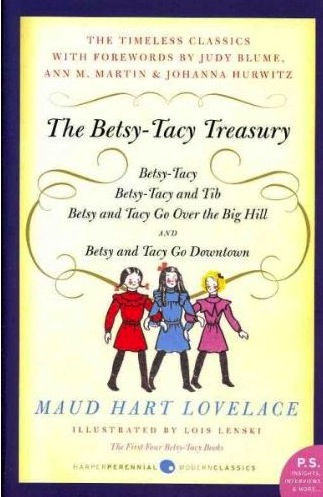Thought I’d share a few of the books I’ve tossed/will be tossing Beanie’s way during our 20th Century History studies…
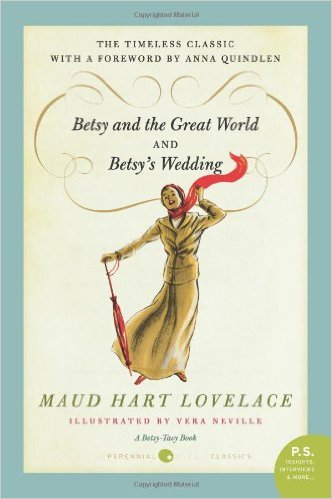
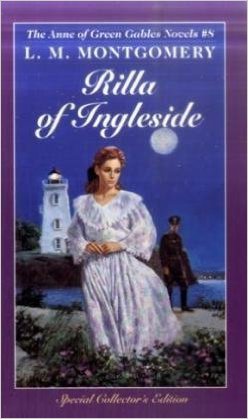
Betsy and the Great World by Maud Hart Lovelace. Betsy’s family, ever supportive of her writerly dreams, sends her on a trip to Europe in 1913. Venice, Germany, England. She’s in London when the Great War begins.
Rilla of Ingleside by L. M. Montgomery. Always and forever one of my favorite books. Life on P.E.I. during WWI, with beloved brothers…and Ken Ford…away at the front.
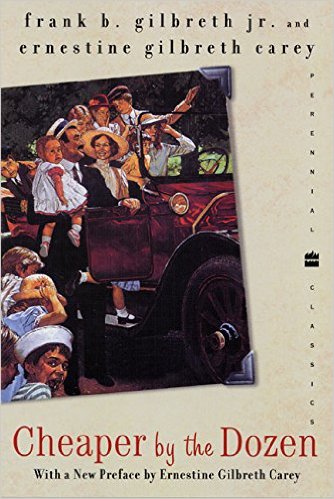
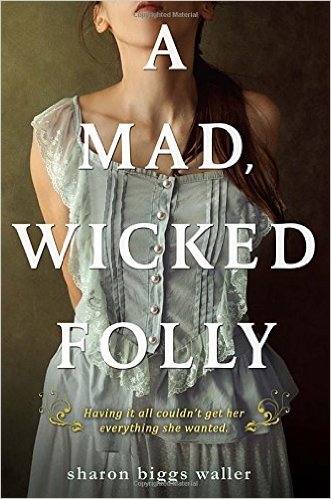
Cheaper by the Dozen by Frank B. Gilbreth, Jr. and Ernestine Gilbreth Carey. When you hit the Roaring 20s, you gotta read Cheaper by the Dozen. That’s practically a Law of Homeschooling.
A Mad, Wicked Folly by Sharon Biggs Waller. This was one of my favorite reads during the CYBILs 2014 judging: the story of an English girl who gets involuntarily (at first) swept up in the fight for women’s suffrage.
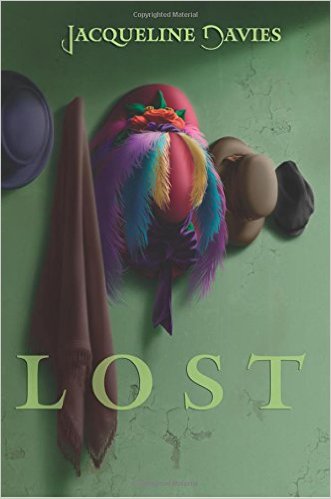 Lost by Jacqueline Davies. Wrenching story (how could it not be?) about the Triangle Shirtwaist Factory fire.
Lost by Jacqueline Davies. Wrenching story (how could it not be?) about the Triangle Shirtwaist Factory fire.
Oh, guys, I have GOT to get caught up. Here I’ve been back from the Deep Valley Homecoming since TUESDAY and haven’t written about it. And now Comic-Con is peering around the corner in the most alarming way! Next week! Good heavens! Or O di immortales, I should say—not yet having mentally emerged from Betsy-Tacy land.
I had such a wonderful time visiting the houses and connecting with members of the B-T crowd. (The Crowd, capital C, you say if you’ve read the books.) I thoroughly enjoyed the children’s author panel on Sunday, answering questions with fellow writers Pat Bauer and Eileen Beha; and my talk about the Betsy-Tacy publishing history went very well. Plus I got to hear the inestimable Kathy Baxter speak—she’s captivating.
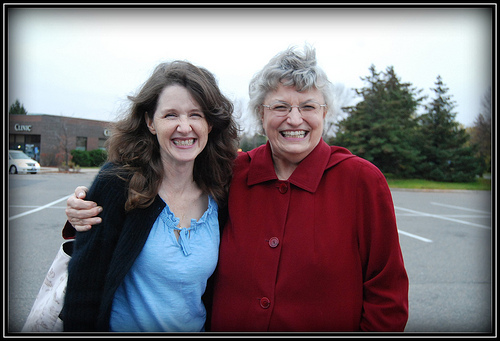
This is how I feel whenever I’m with Kathy. Photo by Margaret Berns in 2010.
Of course I had to reread as many of the Tomes as possible before and during the trip. Began with the high-school books this time around and made it through Betsy’s Wedding. Actually, I read Wedding twice—I always skip ahead to it straight from Betsy and Joe. I read Betsy and the Great World on the plane ride home and then tore through Betsy’s Wedding a second time that evening, happily back in my own bed.
I swear my children gained multiple inches during the three nights I was away.
Our author panel made the front page of the Minnesota Free Press:
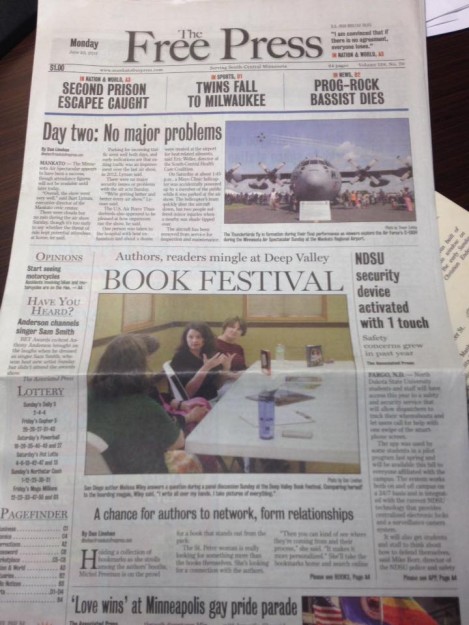
I have yet to see a panel photo of myself in which I’m not making a goofy face. And if you tied my hands I’m not sure I could speak…
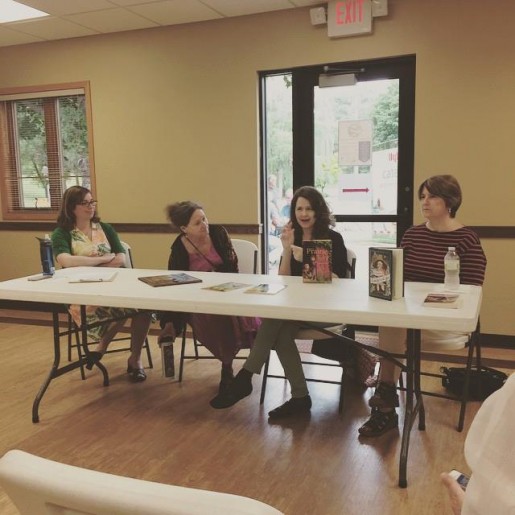
Discussing our writing processes. Apparently mine involves crushing people’s heads. Photo swiped from Nancy Piccione, with thanks!
I’m not doing justice to the Homecoming with this hasty post—I so enjoyed all the other talks and made some wonderful new friends. And on my first evening in Mankato, of course I had to walk all over town past Betsy and Tacy’s bench and Tib’s chocolate-colored house and Carney’s sleeping porch and Lincoln Park and the Carnegie Library, trying not to make a whole nother series of goofy faces. I am 100% fangirl at heart.
Major props to Julie Schrader and the rest of the organizers for hosting a perfectly marvelous event.
Today begins the Deep Valley Homecoming, a celebration of Maud Hart Lovelace’s Betsy-Tacy books in her hometown of Mankato, Minnesota (the real Deep Valley). I won’t be joining the fun until tomorrow—can’t wait!
I have visited Mankato once before, after the 2010 Kidlitcon in Minneapolis. The awesome Kathy Baxter took my pal Margaret and me around town, showing us All the Important Places From the Books, and I just about died of excitement (as Margaret chronicled in her photos). The brass bowl! Winona’s wall! Carney’s sleeping porch! Lincoln Park!
THE BENCH, for heaven’s sake!
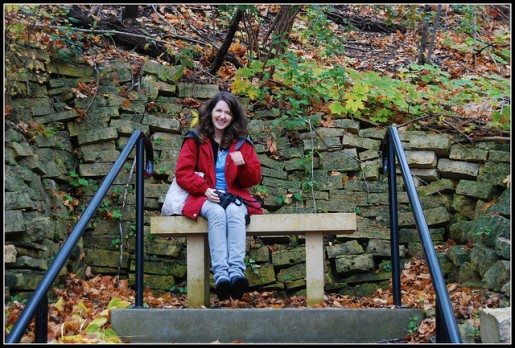
Betsy and Tacy’s bench on the hill. Photo by Margaret Berns.
Yes, I looked exactly that goofy the whole time. What can I say? I’m a fan.
My Deep Valley Homecoming schedule
Sunday, June 28th
12:15pm: Children’s literature panel discussion at the Book Festival
2:15pm: I will read from one of my books
Monday, June 29th
11:30am: Presentation at the Historical Society. Topic: the publishing history of the Betsy-Tacy series.
I hope to see you there!
Related posts:
Betsy and Tacy Go Over the Big Hill
The Betsy-Tacy Songbook
Interview with Mitali Perkins, Jennifer Hart, and me about Maud’s books
Betsy-Tacy booksigning at ALA Midwinter
Photos of my visit to the real Deep Valley, as chronicled by Margaret in Minnesota
Why I love Carney
Why I love Emily
A Reader’s Guide to Betsy-Tacy
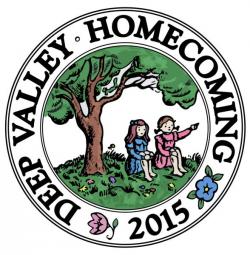
Attention Betsy-Tacy fans!
A Celebration of Maud Hart Lovelace & the Betsy-Tacy books!
June 26 – 30, 2015
Make plans to attend this event. Fun for the entire family!
Activities include: Betsy & Tacy House Tours, Betsy-Tacy Neighborhood Tour, Narrated Horse-drawn Trolley Rides, Discover Deep Valley Bus Tours, Deep Valley Victorian Tea, Book Festival, Fashion Show, Play, Living History Actors, Programs, Speakers & Re-enactments, Gift Shop & Exhibits & Music, Vintage Car Show, food & crafts and more!
Registration form and schedule is in progress and will be posted very SOON!
DVH NEWS!
We are excited to announce that Melissa Wiley will be the feature speaker at the Deep Valley Homecoming (DVH) this summer. Melissa Wiley is the author of The Prairie Thief, Fox and Crow Are Not Friends, and the Inch and Roly series, as well as Little House in the Highlands and seven other novels about the ancestors of Laura Ingalls Wilder. Melissa wrote the forward to the HarperPerennial ModernClassics 2010 edition of Carney’s House Party and Winona’s Pony Cart by Maud Hart Lovelace.
Joining Melissa Wiley as featured speaker will be Nancy McCabe, author of From Little Houses to Little Women. Her book is a memoir about her return to the beloved books of her childhood and travel to places related to her favorite authors, including Laura Ingalls Wilder, Maud Hart Lovelace, Lucy Maud Montgomery and Louisa May Alcott.
Melissa and Nancy will participate in the Deep Valley Book Festival on Sunday, June 28 and will each speak during the DVH programs on Monday, June 29. We’ll have more details about what you can look forward to from these authors and all of our other speakers and presenters in the coming days.
For more information, visit the Betsy-Tacy Society website. Hope to see you there!
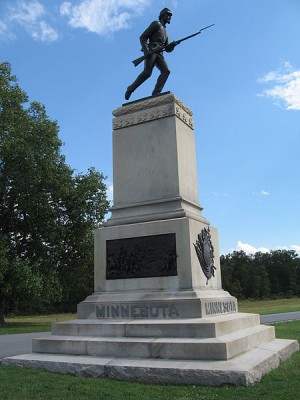 Image source: Wikimedia Commons.
Image source: Wikimedia Commons.
Reading this story, my heart is in my throat.
The Battle of Gettysburg, Day 2, July 2nd, 1863.
“The scene is the center of the American line. Most of the attacks on the flanks have been repulsed by now, or nearly so, and the sun is near to setting. The American lines are now almost set into the famous ‘fish-hook’ formation that one can find on so many maps. But the operative word is ‘almost.’
“In the center, there is a gap…”
The writer is Lt. Col. Robert Bateman, and his recounting of the events in the weeks leading up to Gettysburg has had me enthralled for days. I’ve followed him from Fredericksburg, Virginia—the town, incidentally, where I graduated from college, and where I met Scott—north to Pennsylvania, his posts spanning the months of June and July, 1863, just over 150 years ago. I don’t particularly want to be in Gettysburg right now; my attention ought to be far to the south, in Alabama. But I can’t look away. Lt. Col. Bateman’s account is riveting.
“In the center, there is a gap because one American Corps commander took it upon himself to move well forward earlier in the fight. The rebels are now finishing crushing that Corps. But ever since that audacious Union Corps commander created that gap in the first place, a succession of recently arriving units have been fighting to keep the middle from collapsing. Now, as the sun sets over Seminary Ridge, the game is almost over. But there is a half-mile opening in the remaining American line, and two whole rebel brigades are headed straight to it.”
You’ll have to read the entire post to get the full thrust of what’s on the line in this moment—heck, you ought to read the whole series—but some of you will understand why this next passage made me gasp.
The American Corps commander now in charge of the section of the line closest to the hole, a fellow named Hancock, sees what is about to happen. The rebels are moments away from breaking the center of the Union line. His own Corps line ends several hundred yards to the north. The next American unit to the south is a quarter mile away. Hancock can see the reinforcements he has called for, as can others on the crest of the hill. Those troops are marching at full speed up the road. By later estimates, the relieving troops are a mere five minutes away from the ridgeline. But the Confederates are closer.
I talked about psychology yesterday. I wrote about how sometimes something that can only be described as moral ascendency (or perhaps morale ascendency) can make it possible for a smaller force to defeat a larger force — first emotionally, then physically. Rufus Dawes and his 6th Wisconsin Infantry pulled that off on the First Day, albeit at a horrendous cost. General Hancock understands in an instant the bigger picture. This is not some small slice of the field. He sees that if the rebels make it to the ridge, they might gain the psychological advantage over the whole Army of the Potomac, much of which is still arriving. So the rebels must be stopped. Now. Here.
And now, what I am about to describe to you transcends my own ability to explain. Hell, it is beyond my own understanding, and I have been a soldier for decades.
General Hancock sees a single American regiment available. But, though it is a “regiment,” this is in name only at this point. A “regiment,” at the beginning of the war, would be roughly 1,000 men. Before Hancock stand 262 men in American blue. Coming towards them, little more than 250 yards away now, are two entire brigades of rebels. Most directly, half of that force — probably about some 1,500 men from a rebel brigade — were coming dead at them. Perhaps a thousand more, at least two entire additional regiments, were on-line with that main attack, though probably unseen by Hancock. But what does that matter? The odds were, already, beyond comprehension.
“My God! All these all the men we have here…What regiment is this?” Hancock yelled.
“First Minnesota,” responded the colonel, a fellow named Colvill.
First Minnesota.
 That’s right, Lovelace readers. The very regiment Emily Webster’s grandfather fought in, the one Carney’s Uncle Aaron (her great-uncle, surely) died in—in that charge on the second day of the Battle of Gettysburg.
That’s right, Lovelace readers. The very regiment Emily Webster’s grandfather fought in, the one Carney’s Uncle Aaron (her great-uncle, surely) died in—in that charge on the second day of the Battle of Gettysburg.
“When Colonel Colville told us to charge,” [Grandpa] said, nobody ran out on that field any faster than Aaron Sibley.”
“You ran fast enough to get a bullet through your arm.”
“Only winged, only winged,” he answered impatiently. “It might have been death for any one of us.”
It was for a good many of them, Emily remembered. She had heard her grandfather say many times that only forty-seven had come back out of two hundred and sixty-two who had made the gallant charge.
—from Emily of Deep Valley by Maud Hart Lovelace
“Every single man of the 1st Minnesota,” writes Lt. Col. Bateman,
“placed as it was at the crest of the gentle slope, could see what was going on. All of them were veterans, having fought since the beginning of the war. Each of them understood the exact extent of what they were being asked to do by General Hancock. And, it would appear, that they all understood why.
“On this day, at the closing of the day, there was no illusion that they might win. There was not any thought that they could throw back a force more than seven or eight times their own size. Not a one of them could have entertained the idea that this could end well for them, personally.
“I suspect, though of course nobody can actually ‘know,’ that there was only a silent, and complete, understanding that this thing must be done. So that five minutes might be won for the line and the reinforcements and that their widows and children might grown up in a nation once more united, they would have to do this thing. Then, as men, the 262 men of the 1st Minnesota followed their colonel as he ordered the advance, leading them himself, from the front.
“They charged, with fixed bayonets, to win 300 seconds for the United States. Union and Confederate sources agree on this next point: There was no slacking, no hesitation, no faltering. The 1st Minnesota charged, en masse, at once alone and together. One hundred and fifty years later, those 300 seconds they then won for the United States have proven timeless. Because it worked. They threw a wrench into the rebel attack, stalling it, before the inevitable end.
“And, as Fox’s Compendium pointed out in cold, hard numbers, it only cost 82 percent of the men who stepped forward.”
Grandpa Webster and Aaron Sibley are fictional characters, but they are based on real people, just as Emily and Carney were. In the afterword to HarperPerennial’s 2010 edition of Emily of Deep Valley, Lovelace historian Julie A. Schrader tells us that Grandpa Cyrus Webster represented a man named John Quincy Adams Marsh, the grandfather of Maud’s friend Marguerite Marsh, the “real” Emily. He was not, however, a Civil War veteran. Schrader writes,
“Maud appears to have based Grandpa Webster’s experiences on those of Captain Clark Keysor (Cap’ Klein)…. General James H. Baker, a veteran of the Dakota Conflict and the Civil War, was the basis for the character of Judge Hodges. In 1952 Maud wrote, ‘Old Cap’ Keysor and General Baker used to visit the various grades on Decoration Day to tell us about the Civil War…'”
Emily is, as I’ve often mentioned, not only my favorite Maud Hart Lovelace book, it’s one of my favorite novels period. Grandpa Webster is very real to me. I can’t describe my astonishment to find him there, suddenly, in Lt. Col. Bateman’s account, rushing unhesitatingly toward that gap in the line. 262 men made the charge. 47 survived. One of them was Cap’ Clark Keysor, who visited Maud’s school classrooms and told her stories she never forgot. Nor shall I.
***
For Lt. Col. Bateman’s entire Gettysburg series, click here.
For more background on the real people who inspired Maud Hart Lovelace’s characters, I highly recommend Julie Schrader’s book, Maud Hart Lovelace’s Deep Valley.
Related posts:
Why I love Carney
Why I love Emily
A Reader’s Guide to Betsy-Tacy
Today’s a big day for Betsy-Tacy fans:
First of all, it’s Maud Hart Lovelace’s birthday…
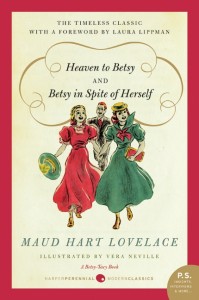 And second, many of the Betsy-Tacy books are available as e-books for the first time today!
And second, many of the Betsy-Tacy books are available as e-books for the first time today!
Yes, I’m excited. The more ways we can spread the Betsy-love, the better. Here’s what’s available so far for Kindle, Nook, iPad, and other e-readers:
• Heaven to Betsy / Betsy in Spite of Herself (together as one volume, just like the recent reissues)
• Betsy Was a Junior / Betsy and Joe (ditto)
• Betsy and the Great World / Betsy’s Wedding
• Carney’s House Party / Winona’s Pony Cart (Have I mentioned I wrote the foreword for that?) 😉
• Emily of Deep Valley (Please, treat yourself to this one. It stands alone, and it shines.)
The four “younger” B-T books will be released as e-books on May 17th. You can pre-order them now if you like.
New to Lovelace? Here’s a A Reader’s Guide to Betsy-Tacy (and Carney and Emily).
Related posts:
Heaven to Betsy! High-school-and-beyond books being reissued! (Sept 2009)
Betsy and Tacy Go Over the Big Hill
The Betsy-Tacy Songbook
Interview with Mitali Perkins, Jennifer Hart, and me about Maud’s books
Betsy-Tacy booksigning at ALA Midwinter
Photos of my visit to the real Deep Valley, as chronicled by Margaret in Minnesota
Why I love Carney
Why I love Emily
A Reader’s Guide to Betsy-Tacy
 Lost by Jacqueline Davies. Wrenching story (how could it not be?) about the Triangle Shirtwaist Factory fire.
Lost by Jacqueline Davies. Wrenching story (how could it not be?) about the Triangle Shirtwaist Factory fire.











